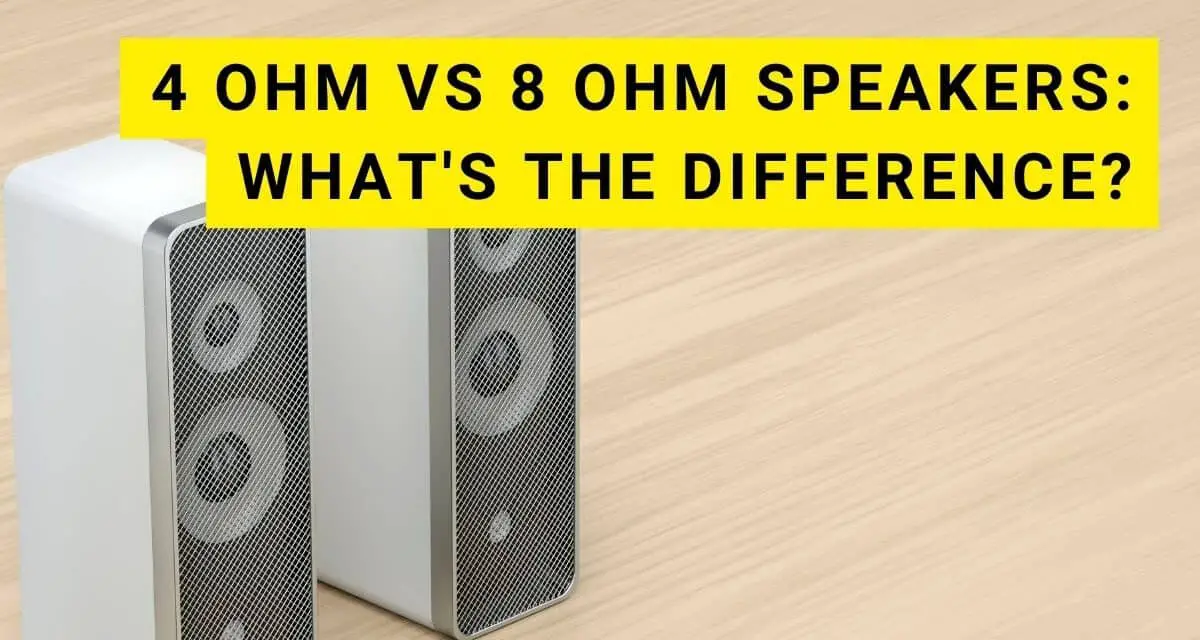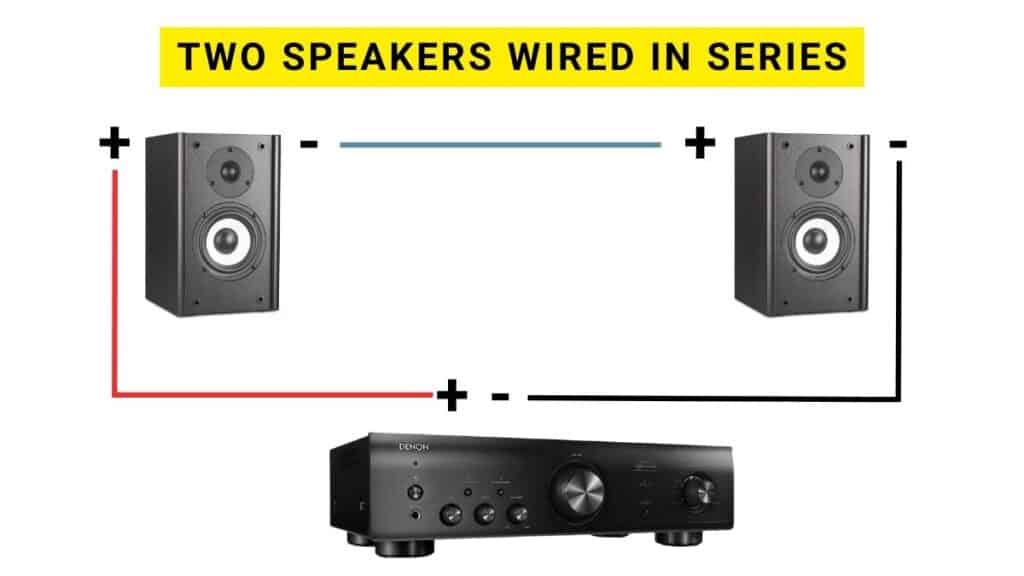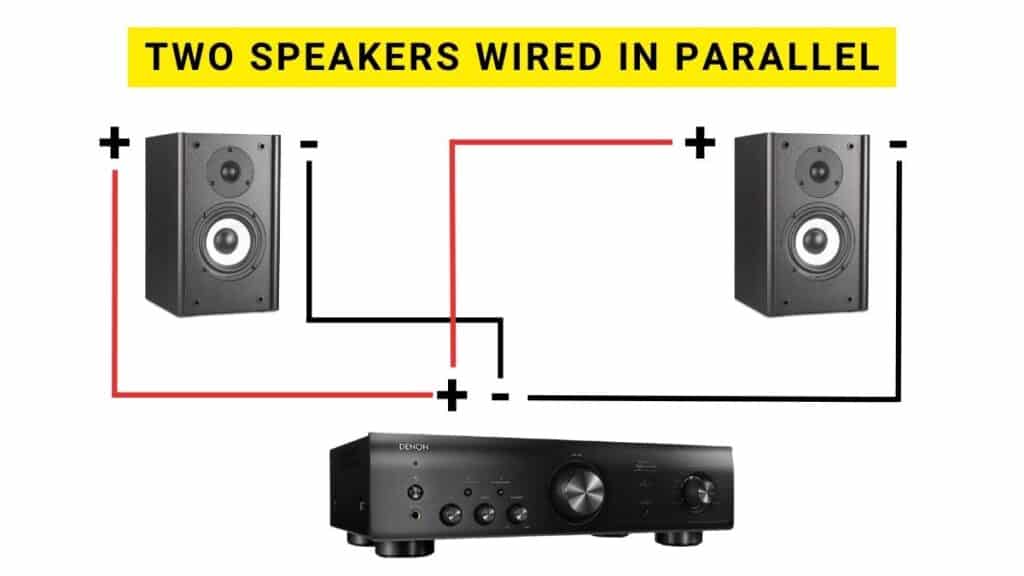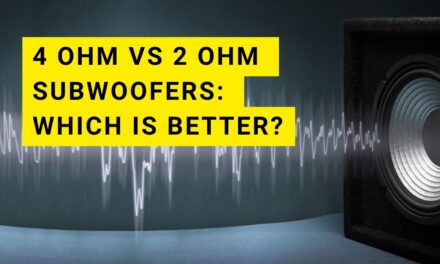For anyone stepping into the world of audio systems, the term “Ohm” is a familiar one, yet its implications can be somewhat elusive.
The “Ohm” is a unit that measures speaker impedance, which, in simple terms, is the resistance a speaker provides to the electric current flowing through it. It plays a crucial role in speaker performance, and understanding it can significantly influence the output of your audio system.
Below, we will dive into the differences between 4 Ohm and 8 Ohm speakers, providing a comprehensive comparison and examining the impact of these variations on speaker performance.
We will also explore the concept of impedance matching and its importance in audio systems. By the end of this article, you should have a deeper understanding of the role that Ohm ratings play in audio systems and be equipped with the knowledge to make the best choice for your audio setup.
Understanding Speaker and Amplifier Impedances
Speaker impedance is essentially a measurement of the speaker’s resistance to the electric current flowing through it, measured in units of Ohms (Ω). A lower-impedance speaker will pull more current from the amplifier. Conversely, a higher speaker impedance draws less current.
The significance of impedance lies in its impact on the smooth functioning of an audio system. While speaker impedance can range from 1 Ohm to several thousand Ohms, most household speakers usually fall within the 4 Ohms or 8 Ohms range.
The Importance of Speaker Impedance
The importance of speaker impedance lies in its impact on various aspects of an audio system:
Amplifier Power
Impedance affects how much power an amplifier can deliver to the speaker. If the speaker has lower impedance than what is required by the amplifier, it may not provide sufficient power, resulting in a weak or low sound quality.
Conversely, if the speaker impedance is too high, the amplifier may be overworked, unable to deliver its full power to the speakers.
Amplifier Compatibility
The impedance of a speaker can affect its compatibility with different amplifiers. Speakers with lower impedances may prove more difficult to drive with certain amplifiers, while those with higher impedances are generally easier to drive and compatible with a broader range of amplifiers.
Sound Quality
Proper impedance matching between the speakers and the amplifier ensures optimal sound quality. If the impedance mismatch is too great, it can result in weaker sound output and poor sound quality overall.
Speaker Efficiency
Impedance affects speaker efficiency, which measures how much sound a speaker produces per watt of power.
Generally, speakers with lower impedances are more efficient, producing more volume with less power. However, they may be more prone to distortion at high volumes and require more careful amplifier matching to avoid overloading the amplifier.
The Need for Impedance Matching
Why is speaker impedance important?
Impedance matching is necessary to protect your amplifier’s circuits.
For instance, an 8-ohm speaker should ideally be used with an 8-ohm amplifier’s output. Similarly, a 4-ohm speaker pairs best with a 4-ohm amplifier.
If the speakers have a higher or lower impedance rating than the amplifier, and you drive the speaker at high volumes, it can potentially damage your amplifier’s circuit.
An impedance mismatch might also cause sound distortion due to signal reflection towards the source, causing destructive interference. Therefore, impedance matching is essential for better sound quality from your speakers.
Differences Between 8 Ohm and 4 Ohm Speakers
The primary difference between 8 Ohm and 4 Ohm speakers lies in the amount of power they can handle, which is determined by their resistance, measured in Ohms. Lower resistance speakers can handle more power, typically resulting in louder output.
For instance, a loudspeaker impedance of 4 Ohms and can handle more energy than an 8-ohm speaker, which has a resistance of 8 Ohms. Consequently, a 4-ohm speaker can usually handle more power and thus, produce a louder and potentially more powerful sound.
Another distinction between the two lies in the wiring and when you connect speakers. When it comes to two or more speakers, 8-ohm speakers are wired in parallel, while 4-ohm speakers are wired in series. This difference can influence the sound output and overall speaker performance.
Each type of speaker has its pros and cons. For example, 8-ohm speakers are generally more efficient, producing more volume with less power.
On the other hand, 4-ohm speakers are typically more powerful, producing more volume but requiring more power, making them suitable for larger systems or situations where high volume is desirable.
Conversely, 8-ohm speakers are a good fit for smaller systems or situations where energy conservation is a priority.
How to Connect More than One Speaker
Connecting multiple speakers involves either a series or a parallel connection. In a series connection, speakers are connected end-to-end, while in a parallel connection, speakers are all connected directly to the amplifier.
Series Connection
In a series connection, the positive terminal of one speaker connects to the negative terminal of the next, and so on. The positive terminal of the first speaker and the negative terminal of the last speaker then connect to the amplifier.
Parallel Connection
In a parallel connection, all speakers are connected directly to the amplifier. The positive terminals of all speakers connect to the positive terminal on the amplifier, and similarly, the negative terminals connect to the negative terminal on the amplifier.
Calculating Combined Impedance of Multiple Speakers
If you’re connecting multiple speakers, you might wonder how to calculate the total impedance of this combination. In a series circuit, you simply add up the individual impedances of all speakers. For instance, if you have two 4-ohm speakers connected in series, the total impedance would be 4+4 = 8 Ohms.
In a parallel combination, the calculation is a bit more complex. The formula for calculating the total impedance in a parallel circuit is 1/((1/Impedance of Speaker 1) + (1/Impedance of Speaker 2) + …). For example, if you connect two 4-ohm speakers in parallel, the total impedance would be 1/((1/4) + (1/4)) = 2 Ohms.
Why Choose Series or Parallel Connection?
Choosing between a series or parallel connection depends on your specific audio requirements, including impedance matching and volume control.
The main advantage of a series connection is that it increases total impedance, making it a good choice when you want to use several low-impedance speakers without overloading your amplifier.
On the other hand, a parallel connection decreases total impedance, making it a good option when you want to increase the power delivered to your speakers.
However, it’s crucial to remember that your amplifier must be capable of handling the lower impedance to avoid overheating or damaging the amplifier.
The Relationship Between Impedance and Sound Volume
There’s a direct relationship between a speaker’s impedance and the volume of sound it produces.
Lower impedance speakers (like 4-ohm speakers) draw more power from the amplifier, resulting in louder sound output. However, they also strain the amplifier more and might distort the sound if the amplifier cannot handle the increased power draw.
In contrast, higher impedance speakers (like 8-ohm speakers) draw less power from the amplifier and are generally less taxing on the amplifier, but their sound output is typically not as loud.
This means that 8-ohm speakers are more suitable for small to medium-size rooms where loud volumes are not necessary.
Impedance and Bass
For bass frequencies, both 4-ohm and 8-ohm speakers can deliver satisfactory results, depending on your specific needs and audio setup. 4-ohm speakers, with their higher power capacity, can often provide stronger and more pronounced bass.
However, they may also require more powerful amplifiers to drive them effectively and avoid distortion.
8-ohm speakers, on the other hand, are generally easier to drive and may provide ample bass for most listening environments.
They may not deliver the same power as 4-ohm speakers but can still provide a satisfactory bass experience, especially in smaller rooms or systems.
Conclusion
In conclusion, the choice between 4 Ohm and 8 Ohm speakers largely depends on your specific audio needs, the amplifier you have, and the size of the space in which you’ll be listening.
Both speaker types have their strengths and weaknesses, and understanding these can help you make the best choice for your audio setup.
As we’ve seen, lower impedance speakers draw more power and can potentially deliver more volume and power, but they can also be more taxing on your amplifier.
Conversely, higher impedance speakers are more efficient and easier on your amplifier, making them a good choice for less power-hungry environments.
Whether you’re setting up a home theater, a professional sound system, or just a simple stereo setup, understanding the role and impact of impedance can help you make informed decisions and enhance your listening experience.







